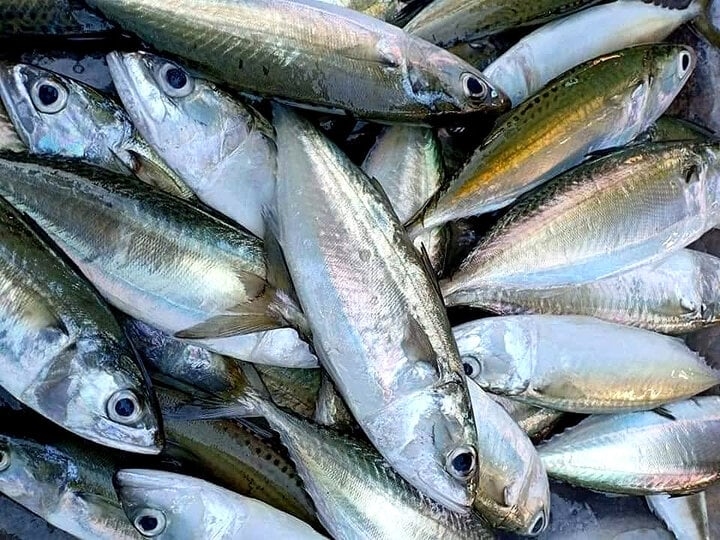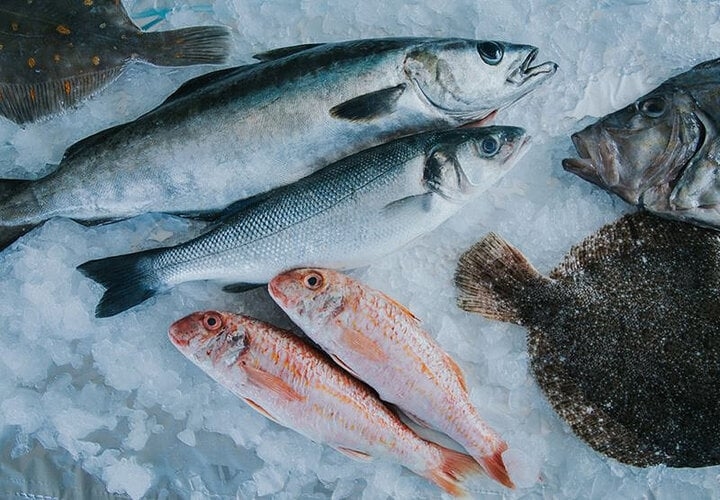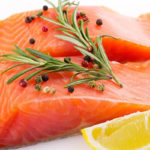If you live in inland areas, you don’t have the opportunity to enjoy fish that has just been caught. Fish transported inland from the sea do not have the same level of freshness and are exposed to varying levels of chemicals. Understanding how to choose fresh, chemical-free seafood is a necessity for ensuring food safety for your family.
How to choose fresh seafood
Fresh seafood should have a shiny body and flesh that has a certain amount of elasticity. Fresh fish usually have their mouths closed. Meanwhile, unfresh fish will not have elasticity and their mouths will be slightly open.
Fresh fish have bright, slightly protruding eyes that are full. The gills of fresh fish should be pink or bright red. In contrast, unfresh fish have cloudy and sunken eyes and are slimy or dry to the touch.

Do you know how to choose fresh, chemical-free seafood? (Photo: M.B)
Fresh seafood has a white anus that is retracted and a flat belly, while unfresh fish have a pink or reddish-purple anus that protrudes and a swollen belly.
Fresh seafood has shiny scales that are firmly attached to the body, are free of mucus, and have no odor when viewed in the sun. In contrast, the scales of unfresh seafood are dull, loosely attached to the body, and have a strong fishy smell.
Fishiness is a characteristic smell of fish, but if the fish is fresh, you will notice the distinctive smell of seawater, while unfresh fish have a very unpleasant smell.
How to choose chemical-free seafood
In order to save money and maximize profits, many vendors import large quantities of seafood for sale and often treat them with urea to keep them fresh for longer. Fish treated with urea may appear fresh to the naked eye, with clear eyes and bright red gills, but they lack elasticity and will leave an indentation when pressed.
Fish treated with urea have a strong ammonia smell, unlike the characteristic fishy smell of seafood. When washed, the fish will become soft and, when fried or stewed, will easily fall apart and have a bland and unappetizing taste.
Therefore, to choose fresh, chemical-free seafood, you should choose reputable seafood stores with clear origins.

How to choose fresh seafood: Fresh fish usually have their mouths closed, chemical-free? (Photo: Greendale)
Some types of seafood are very good for your health
Seafood is rich in nutrients, especially omega-3 fatty acids, protein, and essential vitamins. In particular, the following types of fish are very good for the body:
Salmon: Contains a lot of protein, vitamins D, B6, B12, selenium, phosphorus, potassium… Each serving of salmon contains over 1,500mg of omega-3s.
Mackerel: Rich in unsaturated and polyunsaturated fatty acids, which help reduce the risk of heart problems. Mackerel also contains anti-inflammatory compounds that help reduce joint pain and stiffness.
Sardines: Contain nearly 1,200mg of omega-3 fatty acids in one serving. In addition, sardines are also rich in vitamin D and calcium, which are essential for bones and muscles.
Tuna: Is a type of fish that is very rich in protein, DHA, as well as vitamins A, B, B16, B12…, helping to improve memory.
Cod: Is a type of white fish, rich in protein and fat, and contains many vitamins A, C, calcium, and essential minerals for the body…
According to VTC news
“3 Simple Steps to Remove the Fishy Smell of Salmon”
Are you looking for ways to get rid of that unpleasant fishy smell associated with salmon dishes? If so, we have some useful tips that can help you make a delicious and healthy meal without the fishy odor. Keep reading to learn our easy-to-follow suggestions for removing the odorous smell from salmon dishes!
Exploring Natural Foods for Allergy Relief
Dealing with allergies can be difficult and uncomfortable, especially for young children. Allergens such as pollen, cosmetics, and insects can cause serious issues for those affected. However, knowledge of the symptoms and taking the necessary precautions can help alleviate the troublesome effects of allergies, like itching, sneezing, and irritation.






































